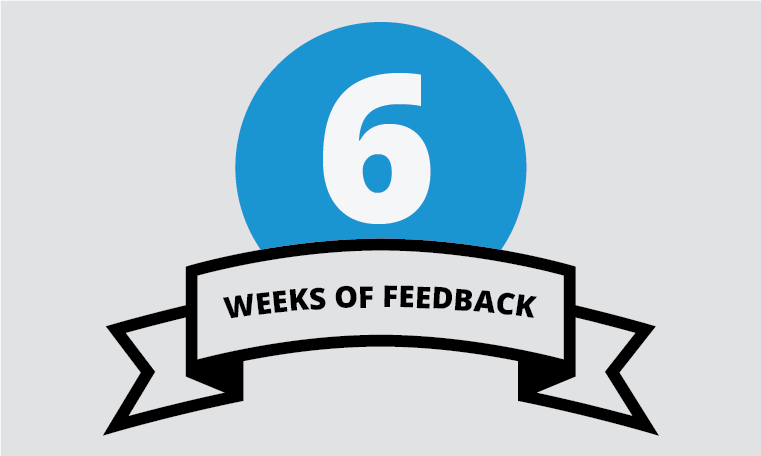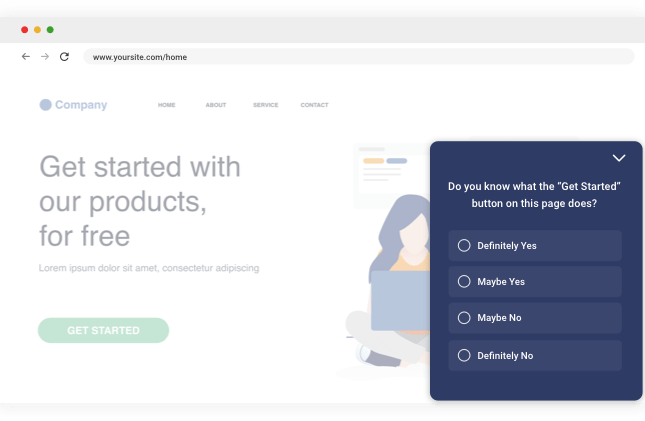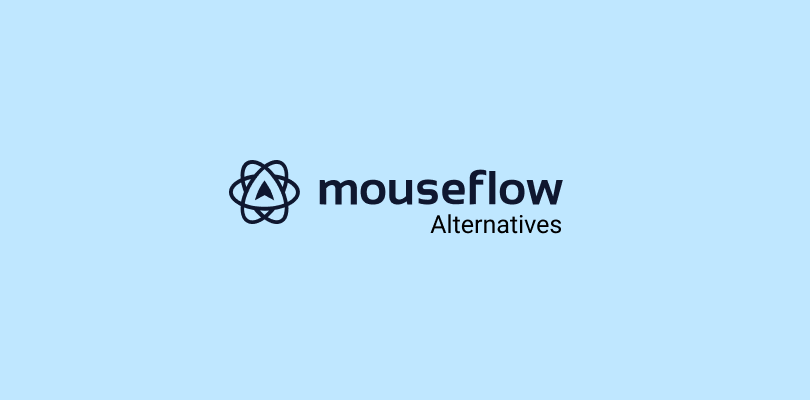“Advertising people who ignore research are as dangerous as generals who ignore decodes of enemy signals.“ – David Ogilvy
Effective copywriting is a science—one that needs to be backed with customer insights (feedback, analytics, etc.). To create a repeatable and successful cadence of creating high-converting copy, you have to figure out what type of content converts more visitors into buyers, namely:
- Who you’re writing for
- How that person thinks
- What that person needs
There’s no easier way to understand this than conducting surveys—for both customers and visitors.
Surveys help you discover how your target customers feel about your brand, your product or service, and the factors that drive them to take action and dig into the actual experience. It provides you with the knowledge to write irresistible and compelling copy that attracts and engages the reader.
However, translating these insights into digestible information is easier said than done.
In this post, I’ll show you how to use surveys to understand your customers better and improve your copywriting.
Step 1: Create Engaging Surveys To Collect Feedback
Online customer surveys are common. Well-designed online surveys that provide insightful and actionable data aren’t.
When creating a survey, make sure you draft it in a way that allows you to get genuine insights into your customers’ decision-making process. It should help you understand your target audience’s daily pain points, product features that excite them, and any doubts they may have concerning your product.
Essentially, you want knowledge of what to say and how to say it in your newsletters, emails, and, more importantly, your landing pages to ensure maximum engagement and conversion.
Your surveys should target two types of customers: your existing customers and your website visitors.
Why?
Feedback from existing customers will help you understand your strengths and USPs (their main intent for looking you up, motivation behind coming to your website, etc.).
In the same way, insights from website visitors who haven’t taken any action will tell you what’s missing from your website and prevent them from taking desired actions (their hesitations, how the competition is doing better, etc.).
Choose your questions carefully, and draft them in a way that enables you to derive as much information as possible.
Read Also: 30 Best Online Website Feedback Tools
Here are some proven tips for creating targeted surveys:
- No one would want a survey to take forever to complete. That’s why increasing the number of questions impacts your response rate drastically. Keep your surveys short to avoid abandonment.
- Add incentives to drive more engagement and increase the survey completion rate.
- Add a headline to show the purpose of the survey. Let respondents understand why you are asking for their time and how it will help you to improve their experience.
- Avoid double-barreled and leading questions, or it may result in unreliable feedback data sets. Keep your question simple and easy to understand.
- Some people may not feel comfortable sharing personal information. So, try to make questions optional to avoid survey abandonment.
Quite a list of dos and don’ts. Isn’t it?
That’s why a good survey tool comes in handy. Tools like Qualaroo provide professionally designed ready-to-use survey templates to help you with your survey campaigns.
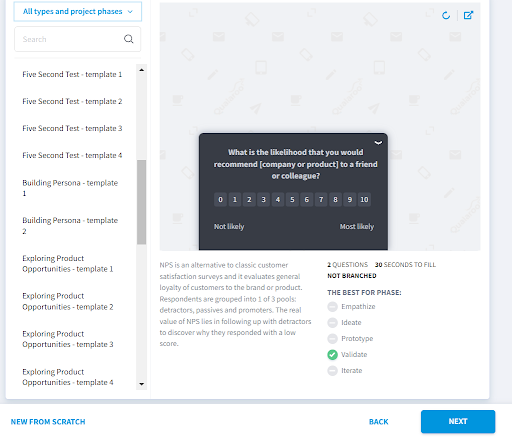
So, if you are new to surveys or looking for focused survey questions, you can always choose a relevant template and tweak it as required.
Step 2: Segment Your Surveys to Target the Right Audience
Different visitors on your web page are at different points along the sales funnel. Some are there for information, some are looking for specific features, and others are at the cusp of conversion. Then, there are existing customers browsing your website.
To make sense of responses from these distinct groups, you need to segment your surveys by targeting specific user types for a given survey. It will provide more nuanced feedback data to help you outline what each visitor cohort wants to see on your pages.
For example:
- First-time visitors may want to see more information about your product’s functions and uses for their business.
- Repeat visitors may be trying to find a specific feature or functionality.
- Some existing customers may want to know what 3rd party integration your SaaS-based product supports.
By mapping different groups’ pain points and expectations, you can create highly targeted landing pages, product pages, blog posts. If the content matches the user intent, it will automatically drive higher engagement.
Tools like Qualaroo provide in-built advanced targeting options to segment your visitor surveys based on visitor behavior and actions.

For example:
- You can set your visitor surveys in a way that only appears to second-time visitors.
- Show it to people who spend X amount of time on a specific web page or your entire website. You can also decide to show the survey when a visitor scrolls halfway down a web page.
- Target visitors based on location, device, and other attributes.
These actions indicate the visitor is interested in what you have to offer, so they’ll likely fill out your survey. Once you get their responses, you can uncover your customers’ hesitations and the kind of outcomes they would want from your product and understand how to overcome the said hesitations.
On the other hand, a tool like Typeform would work better to derive maximum information from customer surveys. Not only is the tool easy to use, but it also works well on desktop and mobile phones, encouraging customers to actually fill out your surveys.
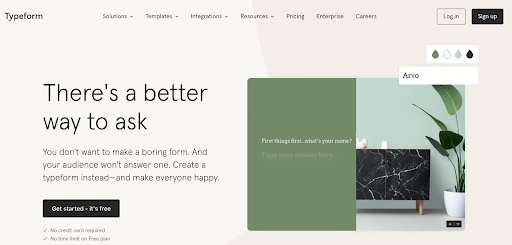
Through customer surveys, you can understand the most valuable part of the offer (your USPs and key features) and customers’ experience after buying your product or service. Use this information to paint an enticing picture for potential customers, which answers why visitors should pick your product or service over the competition
By asking the right questions (we’ll cover this in more detail later), you can understand where a person is in their buyer journey and then use the information to create appropriate messaging that gets people to take the intended action.
Read Also: 12 Best Typeform Alternatives
Step 3: Analyze Survey Responses to Derive Actionable Insights
At this stage, you’ve got visitors and customers to answer your surveys. But that’s the thing: you only have answers—it’s your job to convert them into useful insights that can be incorporated into your copywriting.
Here are a few steps that we use to categorize and analyze each piece of survey feedback from our web pages:
- Create a separate tab for each question you asked visitors and customers.
- Create a spreadsheet and arrange the responses for each question next to the question tab.
- Add the respondents’ meta-data to each survey.
- Create and assign suitable tags to each response, such as bugs, content missing, new feature requests, navigation issues, etc.
- Use the organized data to segment the visitors and identify common patterns between answers while going through them.
- Look for what different groups say about a page.
- Note down the most recurring pain points and issues people face while navigating the website to find actionable insights.
These are a lot of steps!
But thanks to technology, advanced survey tools can reduce manual work to a great extent. You can leverage AI-based sentiment analysis and text analytics engines to dig through the responses in real-time and find common themes. Once analyzed, the findings can be neatly summarized in an appendix in a report to support your copywriting recommendations and showcase data transparency.
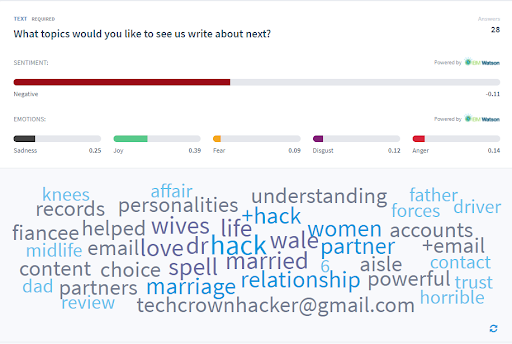
Be sure to highlight powerful messages and insightful feedback that can inspire action from the responses when analyzing survey responses. You already have a gold mine of information—all you need to do is a little digging.
Step 4: Create High-Converting Copy Using Customer Insights
Let’s take a step back and review what information you have with you. You know:
- Your customers’ pain points and common hesitations
- Product aspects that are most valuable to your customers
- Elements that inspire your current customers to take action
- Factors your website visitors struggle with
- Elements missing from the page
Next, it’s time to create an amazing copy using all this information.
Let’s see two brands that did an amazing job of putting the insights into webpage designs:
1. Hootsuite
The challenge for Hootsuite was to find why visitors who landed on its landing page weren’t converting. The growth team implemented on-site surveys asking people if the information on the page was enough to push them towards purchase.
Here are what surveys revealed about Hootsuite’s landing page:
- 65% of visitors said they needed to see more information before making any purchase decision.
- The page didn’t elaborate on how the product worked.
- It failed to explain the core functions of the product.
With the actionable insights in hand, the team set out to deliver what visitors wanted:
- They overhauled the design to show the product’s USP and core functionality.
- Included images of Hootsuite’s dashboard and other screens to show how it worked.
- Added a section that discussed the pricing tiers and their unique features.
- Published customer stories and testimonials to build credibility.
Then, they put up the new design for A/B testing against the original page and saw a 16% increase in conversions.
There cannot be a more clear example of how aligning your website copy with customer expectations and fears can improve business KPIs.
2. Shultz
Another great copywriting example is Shultz Photo School’s landing page copy. It uses a one-liner (“We help parents create pics their family will cherish forever”) to inform visitors how it can help them.

How do you think Shultz did it?
Shultz accurately identified its target audience’s (parents) biggest pain point, i.e., not being able to capture their family’s priceless moments. The team funneled this insight to draft a strong sales pitch, explaining how visitors can solve the problem through Shultz (learn how to take good pictures).
When you run customer surveys and visitor surveys, you have all the information in front of you. You just have to use your writing skills to present the insights in a way that triggers the right emotions, inspiring them to take action and contact your team. Artificial intelligence tools can also help write and test more copy variations to refine your copy.
Once done, you can run A/B tests to see if the new copy performs better than the original design or not.
Wondering how to get started on A/B Testing?
Take a peek at our Complete Guide on Running Successful A/B Testing on your website, app, or product.
Insightful Survey Questions to Improve Your Copywriting
By now, you understand that a survey question is the most crucial element of your campaign. Because the quality of questions you ask in your surveys will make or break your copywriting.
You must know how to draft the right questions for your visitor surveys and customer surveys that provide you with actionable data to write persuasive copy.
Here are the main types of questions to include in customer surveys:
a. Segmentation questions
To divide respondents into different segments based on their industry, job title, habits, age, location, and other attributes.
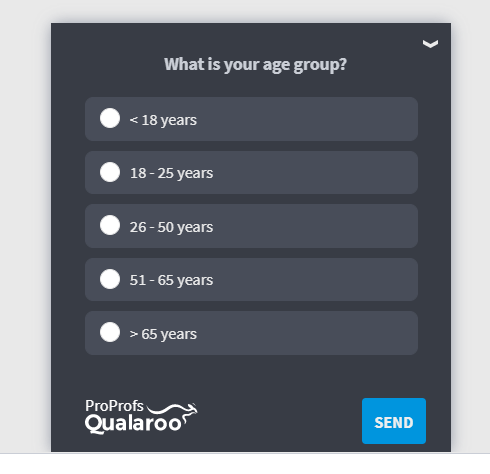
b. Behavior-oriented questions
To understand customers’ buying behavior, preferences, and frequency.

c. Product ownership questions
To answer how many and what categories of products the customer owns (if any).
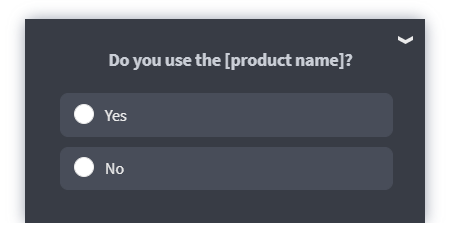
d. Decision-making questions
To review the factors (durability, price point, style, ease of use, and so on) that influence the customer’s decision-making process.
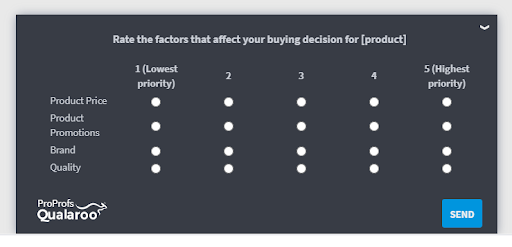
e. Goal discovery questions
To find out what customers are trying to accomplish when they visit your website and similar questions.
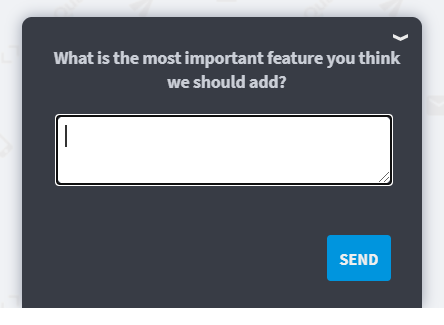
f. Goal ranking questions
To evaluate the priority of goals and objectives that matter the most to your customers.
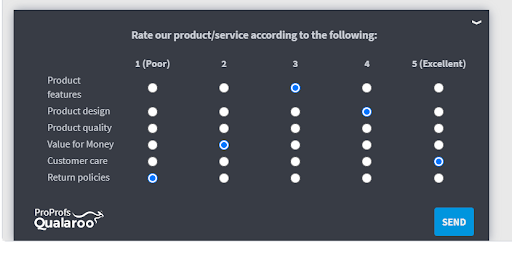
g. Content-oriented questions
To identify the type of content which has the biggest influence on purchase decisions.
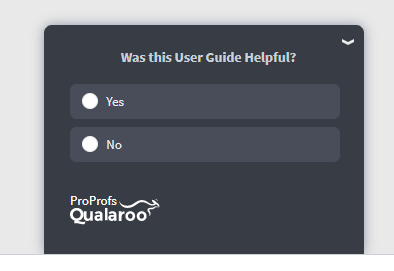
h. Product usage questions
To gauge how frequently and for what purpose the customers use your product or service.
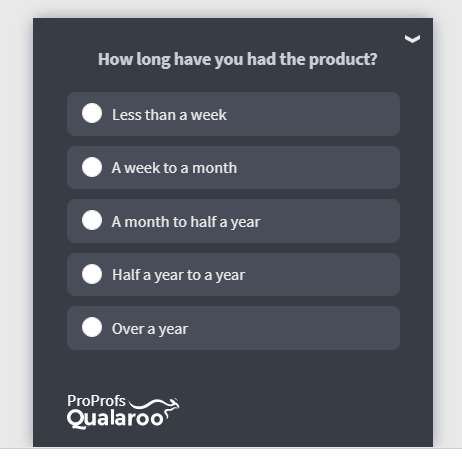
I. Unique information-gathering questions
To highlight the key USPs of your brand, product, and service.
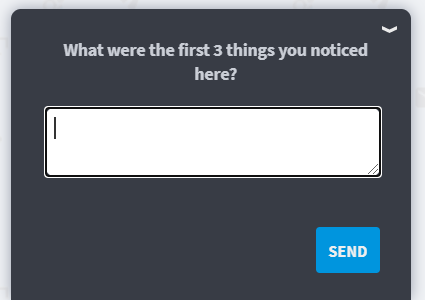
J.Brand selection questions
To gauge brand recommendation probability and understand what makes your product better or worse than the competition.

Best Survey Questions to Write Website Copies That Convert
Keeping the above categories in mind, here are some of the best survey questions that can genuinely help improve your copywriting:
- Where did you first hear about us—which channel, who referred us, or through which medium?
- When did you realize you wanted a product similar to [product name], and what caused you to finally start looking for suitable solutions?
- How would you say [product name] helps you in your daily life? How does it give you the most value?
- Say we discontinue [product name]. What features or benefits would you miss the most?
- What caused you to choose [product name] over other competing products?
- What is your biggest problem right now, and what product are you currently using to solve it and accomplish a task or goal?
- Which of the following would be best to describe you?
- Would you like to change anything, or is there anything you dislike about the [product name]?
- Please rate the following factors in the decreasing order of how they affect your purchase decisions?
- Is there anything holding you back from trying our company or our product right now?
- Do you have any recommendations or suggestions that can help us improve?
- Did you find the information you were looking for?
- Was this page helpful?
- What’s stopping you from signing up for a free trial?
Takeaway Thoughts
Your website or landing page is the face of your brand for online traffic. That’s why you need to make a lasting first impression to engage visitors. The best way to do it is by showing how you have the optimal solution to their problems and needs.
With small surveys, you can learn about your target audience and then use the insights to write a more persuasive copy. It helps you understand what’s going on inside your customers’ minds, the questions they ask before purchasing, and the triggers that get them to take action.
Based on this information, you can choose impactful words to describe your product or service when writing website copy, product descriptions, headlines, or even blog posts to successfully position it as the best solution available in the market
FREE. All Features. FOREVER!
Try our Forever FREE account with all premium features!

 We'd love your feedback!
We'd love your feedback! Thanks for your feedback!
Thanks for your feedback!


